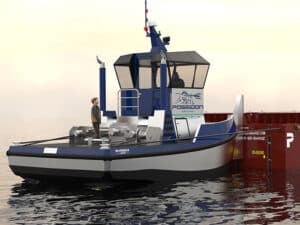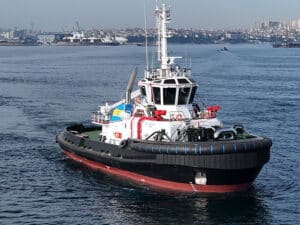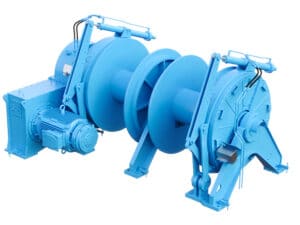
Brazilian tug operator opts for Schottel hybrid solution
Written by Nick Blenkey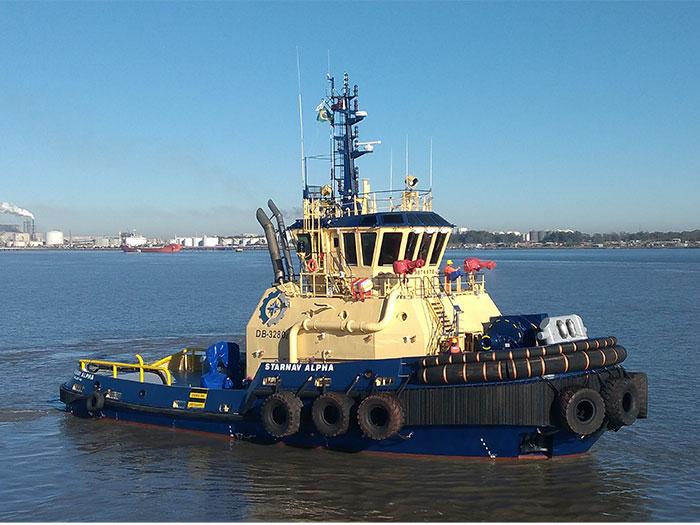
Starnav Alpha: one of 34 Schottel propelled vessels already in service in the Starnav fleet
With its eyes on IMO 2030 and 2050 emissions reduction targets, Brazilian towage operator Starnav has contracted the Detroit shipyard in Itajaí for four new 32 meter long, 11.6 meter wide escort tugs. All four will feature Schottel RudderPropellers. One will be delivered with the Schottel patented Sydrive-M technology installed; the other three will be configured to be Sydrive-ready.
Sydrive-M is a mechanical hybrid solution that connects port and starboard mounted azimuth thrusters to allow them to be driven together by only one of the main engines. In turn, this leads to reduced main engine operating hours of the main engines, resulting in lower maintenance costs as well as less fuel consumption and lower emissions.
The system needs no additional electronic components and offers three main operation modes: Light Operation or Free Sailing Mode, Full Thrust Operation Mode and FiFi-Mode.
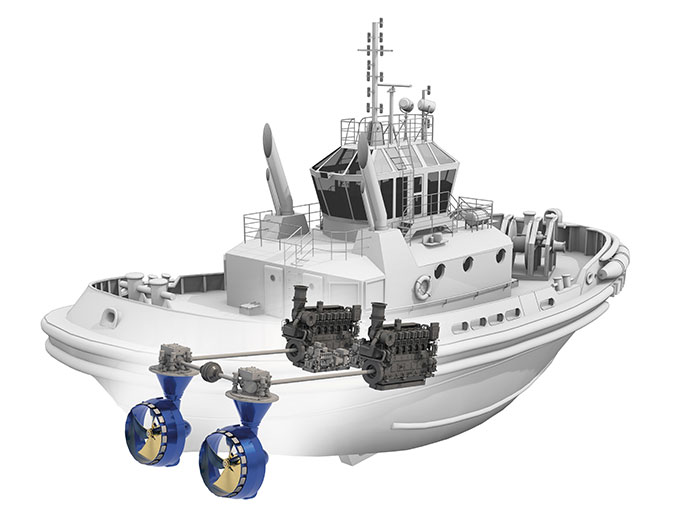
“By making use of the Schottel hybrid solution, we are taking the initiative to increasingly seek a clean operation,” says Carlos Eduardo Pereira, CEO at Starnav Serviços Marítimos. “Starting now is particularly important: the vessels that are built today will be in the water for decades to come. Our focus has always been the high level of reliability in the equipment, mainly safety and environment care. With 34 vessels propelled by Schottel in our fleet, we will continue expanding our operations and benefit from a strong partner with extensive know-how in Brazil.”
BOLLARD PULL OF MORE THAN 80 TONNES
The main propulsion of each ASD tug consists of two diesel-driven Schottel RudderPropellers type SRP 490 (2,525 kW each) featuring fixed-pitch propellers with a diameter of 2.8 meters. With this thruster configuration, the tugs will achieve more than 80 tonnes of bollard pull and a maximum speed of 12.5 knots.
The first of the four tugboats is scheduled to enter service in 2022.

